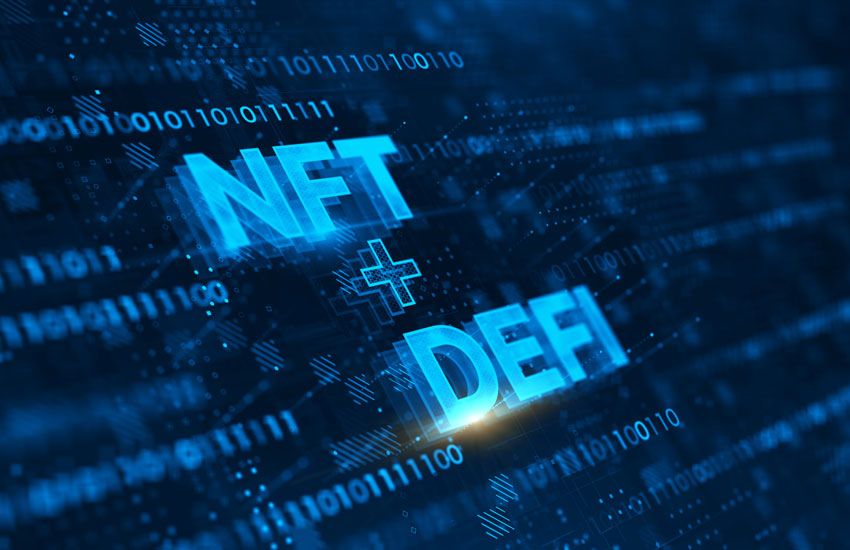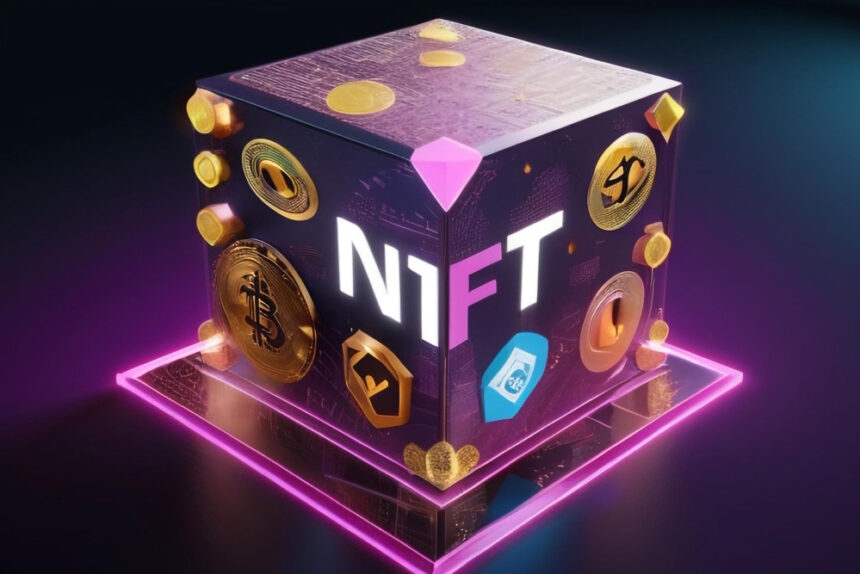The explosive rise of decentralized finance (DeFi) and non-fungible tokens (NFTs) has become a defining characteristic of the cryptocurrency landscape in recent years. As blockchain technology continues to evolve, these two revolutionary segments are transforming the way people think about finance, ownership, and digital value. However, with innovation comes uncertainty. The DeFi and NFT markets, while promising, are not without their fair share of risks and challenges.
In this article, we take a deep dive into the current challenges facing DeFi and NFTs amidst the ongoing crypto boom. Whether you’re an investor, developer, enthusiast, or just curious about the world of decentralized technologies, understanding these risks is essential for navigating this volatile space.
The Rise of DeFi and NFTs: A Quick Overview
Before examining the challenges, it’s essential to understand what DeFi and NFTs represent in the broader crypto ecosystem.
What is DeFi?
Decentralized finance, or DeFi, refers to a suite of financial applications built on blockchain networks that operate without traditional intermediaries like banks or brokerages. Using smart contracts, DeFi platforms enable users to lend, borrow, trade, and earn interest on crypto assets—all without the need for a central authority.
DeFi protocols like Aave, Compound, Uniswap, and MakerDAO have amassed billions of dollars in total value locked (TVL), showcasing the growing trust and adoption in decentralized systems.
What are NFTs?
Non-fungible tokens (NFTs) are unique digital assets that represent ownership of a particular item, piece of content, or data stored on a blockchain. Unlike cryptocurrencies like Bitcoin or Ethereum, NFTs are not interchangeable—each one has a unique identity and value.
NFTs have gained immense popularity in areas such as art, gaming, music, virtual real estate, and collectibles. Platforms like OpenSea, Rarible, and Foundation have become hubs for creators and collectors to exchange digital ownership in a decentralized manner.
Together, DeFi and NFTs represent the cutting edge of blockchain innovation—but this innovation is not without its vulnerabilities.
1. Regulatory Uncertainty
One of the most pressing challenges facing both DeFi and NFTs is the lack of clear regulatory frameworks.
DeFi and the Law

The decentralized nature of DeFi makes it difficult for regulators to identify accountability. Who is responsible when a protocol is exploited or malfunctions? Unlike traditional financial institutions, DeFi lacks a central authority or compliance department, leaving users exposed to potential legal gray areas.
Governments around the world, including the U.S. Securities and Exchange Commission (SEC), are actively exploring how to regulate DeFi protocols. The absence of clear regulations creates uncertainty for developers, investors, and users, which can hinder the sector’s growth.
NFTs and Copyright Issues
NFTs pose their own set of regulatory dilemmas, particularly in relation to intellectual property and copyright laws. Many artists have found their work minted as NFTs without their consent, sparking debates over digital rights and ownership.
Additionally, the resale of NFTs can raise issues regarding royalties and fair compensation for original creators. Until clear rules are established, creators and collectors remain vulnerable to legal complications.
2. Security Vulnerabilities
Security is perhaps the most significant risk associated with DeFi and NFTs. Despite the promise of blockchain as a secure technology, vulnerabilities in smart contracts and user interfaces are frequent targets for hackers.
Smart Contract Exploits
DeFi platforms rely heavily on smart contracts—self-executing pieces of code that automate transactions. However, if these contracts are not properly audited or reviewed, they can be exploited.
Numerous incidents, such as the infamous DAO hack or the Poly Network attack, have resulted in millions of dollars in losses. These events shake user confidence and demonstrate the importance of robust security practices.
NFT Theft and Scams
While NFTs are touted as proof of ownership, that doesn’t stop scammers from stealing them. Phishing attacks, compromised wallets, and malicious marketplaces are all used to exploit NFT holders.
With the rise in popularity, there has also been an increase in “rug pulls”—where developers create hype around an NFT project, sell tokens, and then disappear with the funds. Without oversight, it’s a wild west environment that preys on inexperienced users.
3. Scalability Issues
As adoption increases, scalability becomes a major hurdle for both DeFi and NFT ecosystems.
Ethereum Congestion
Ethereum, the most commonly used blockchain for DeFi and NFTs, often faces network congestion, leading to high gas fees and slow transaction times. This makes small transactions unfeasible and creates barriers to entry for average users.
Layer-2 solutions and alternative blockchains like Solana, Avalanche, and Polygon offer some relief, but interoperability and adoption challenges persist. Until these scalability issues are addressed, DeFi and NFTs will struggle to achieve mainstream use.
Environmental Concerns
Scalability is not just about performance—it’s also about sustainability. Proof-of-work systems like the former Ethereum model (prior to The Merge) raised significant concerns about energy usage and environmental impact.
While Ethereum has transitioned to proof-of-stake, the wider NFT and DeFi ecosystems must consider the carbon footprint of their technologies to ensure long-term viability.
4. Market Volatility and Speculation
Volatility is a hallmark of all crypto markets, and DeFi and NFTs are no exception. While price swings create opportunities for gains, they also carry substantial risks.
The Hype Bubble
NFTs in particular have been criticized for their speculative nature. In many cases, prices are driven more by hype and scarcity than intrinsic value. High-profile celebrity endorsements and social media trends can inflate prices unsustainably, leading to massive losses when the bubble bursts.
DeFi tokens also experience wild price fluctuations, driven by yield farming incentives and tokenomics. While these mechanisms can attract liquidity, they often lack long-term stability, leading to rapid value collapses.
Liquidity Risks
In DeFi, liquidity is both a strength and a vulnerability. Protocols rely on users to provide liquidity, but in times of market panic, this liquidity can vanish almost instantly. This can trigger cascading liquidations and wipe out user funds in minutes.
5. User Experience and Accessibility
The complexity of DeFi and NFT platforms remains a significant barrier to widespread adoption.
Confusing Interfaces
DeFi protocols often have technical user interfaces that are not beginner-friendly. Users must understand wallet connections, smart contract interactions, gas fees, slippage tolerance, and more. This steep learning curve discourages newcomers and increases the risk of user error.
Wallet Management
Managing digital wallets, private keys, and seed phrases is another major challenge. If users lose access to their wallet, they may lose their assets permanently. Unlike traditional banking, there is no “forgot password” button in crypto.
To achieve mass adoption, DeFi and NFTs must prioritize user-centric design and education initiatives that simplify onboarding and reduce risk.
6. Ecosystem Fragmentation
The DeFi and NFT ecosystems are fragmented across multiple chains and protocols, creating silos that limit interoperability.
Lack of Standardization
There is no universal standard for DeFi or NFT applications, meaning each project often reinvents the wheel. This lack of standardization creates compatibility issues, security gaps, and integration challenges.
Cross-chain bridges and interoperability solutions are in development, but they are still in early stages and come with their own risks, including potential exploits and technical bugs.
Tribalism and Competition
Within the crypto community, strong tribalism exists between different blockchains and ecosystems. While healthy competition can spur innovation, it also leads to duplication of efforts and delays in establishing universal best practices.
7. Psychological and Social Factors
Beyond the technical and financial risks, psychological and social dynamics also play a significant role in the DeFi and NFT markets.
Fear of Missing Out (FOMO)
Crypto communities thrive on hype and rapid cycles of attention. This creates a culture of FOMO, where people invest not based on due diligence, but because they fear missing the next big opportunity.
This mindset can lead to reckless financial behavior and poor investment decisions. Education and responsible investing must be emphasized to counteract the effects of FOMO.
Influence of Celebrities and Influencers
Many NFT projects rise to prominence due to celebrity endorsements or viral influencer campaigns. While this can bring visibility, it also distorts value and encourages blind investment. When the hype fades, many of these projects lose their relevance or value entirely.
8. Legal and Ethical Concerns
As DeFi and NFTs continue to grow, so do the ethical dilemmas surrounding their usage.
Money Laundering and Fraud
Regulators have expressed concerns that DeFi platforms and NFT marketplaces can be used for money laundering or illegal financial activities due to the pseudonymous nature of blockchain.
Without KYC (Know Your Customer) or AML (Anti-Money Laundering) protocols, these platforms can be exploited by bad actors, which may attract regulatory scrutiny and restrictions.
Cultural and Artistic Concerns
NFTs, while celebrated for enabling digital art ownership, have also raised concerns within the traditional art world. Some critics argue that NFTs commodify culture and prioritize profit over artistic integrity.
Artists must navigate these concerns while also protecting their rights in a digital landscape that is often exploited by plagiarists and opportunists.
Final Thoughts: The Path Forward for DeFi and NFTs
Despite the numerous challenges outlined above, the potential of DeFi and NFTs remains enormous. These technologies offer the promise of democratized finance, creative empowerment, and decentralized ownership in ways the world has never seen before.
However, for DeFi and NFTs to thrive in the long term, the industry must mature. Developers must prioritize security, regulators must provide clarity, users must be educated, and platforms must become more inclusive and transparent.
Key Takeaways:
- DeFi and NFTs are innovative but carry significant technical, legal, and financial risks.
- Security vulnerabilities, regulatory uncertainty, and speculative bubbles are top concerns.
- Improving user experience, scalability, and ethical standards is critical for mainstream adoption.
The road ahead may be rocky, but with thoughtful innovation and collective responsibility, the DeFi and NFT ecosystems can evolve into resilient, impactful pillars of the future digital economy.

